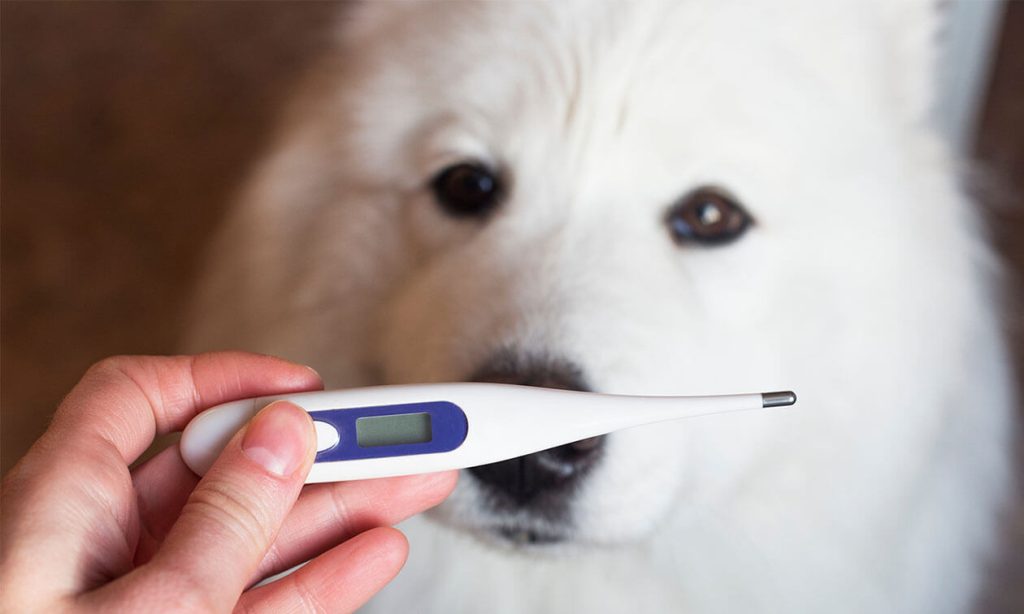How Temperature and Climate Affect Pet Behavior

The Relationship Between Weather and Pet Behavior
The connection between our pets’ behavior and the surrounding climate conditions can be both fascinating and critical for fostering their well-being. Understanding how environmental factors such as temperature, humidity, and seasonal changes affect our furry friends is essential for every pet owner. In Nigeria, with its plethora of climate zones, from the arid north to the lush and humid south, these impacts can be vividly observed in the behaviors of pets.
- Heat Sensitivity: Many dogs, particularly breeds with short muzzles or thick fur, can struggle significantly in high temperatures. For instance, you may notice your dog becoming lethargic or irritable during the blazing hot afternoons typical of Nigerian summers. This heat can lead to heatstroke if pets are not properly cared for, which might manifest through excessive panting, drooling, or unusually dark-colored urine. Providing a cool environment and ample water is crucial during such weather.
- Rainy Days: Cats and dogs react differently to wet weather. While dogs may experience anxiety about going outdoors during torrential rains, preferring to stay dry, cats often seek solace and hide from the noise and disruptions brought on by thunderstorms. Understanding this can help you devise strategies to keep your pets comfortable. For instance, creating a cozy retreat for your kitty during storms may reduce their stress levels.
- Humidity Levels: High humidity can sap the energy of pets, leading them to be less playful than usual. It can also exacerbate health issues in pets, particularly in breeds prone to respiratory problems. It’s important for pet owners to recognize signs of discomfort; dogs may become restless or seek out cool surfaces to lie on. Keeping windows open for ventilation or employing fans can make a noticeable difference in their comfort.
Being aware of climate-specific behavior changes is key to responsible pet ownership. For instance, dogs may require additional hydration during the dry season, while cats may experience changes in their eating habits due to fluctuations in temperature. Moreover, nurturing a keen observation of your pet’s behavior in relation to the weather ensures that you can adapt their routine for a healthier lifestyle.
Ultimately, a deeper understanding of how temperature variations affect your pet’s daily routines can lead you to better care practices. Monitoring your pets closely and adjusting their activities based on the weather can create a happier and safer living environment for them. The bond between you and your pet can thrive when nurtured with knowledge and care about the effects of your surrounding climate. Continue to explore and observe, as you unravel the intriguing relationship between your pets and the weather they experience daily!
CHECK OUT: Click here to explore more
Temperature Tolerance Across Species
Understanding how temperature impacts pet behavior is fundamental, especially in a diverse climate like Nigeria’s. Pets, much like humans, have varying degrees of tolerance to heat and cold, contingent on their species, breed, and physical characteristics. For example, large breeds such as the Akita or the Mastiff, although robust, are often sensitive to high temperatures. In stark contrast, breeds known for their endurance, like the Basenji or Ridgeback, may exhibit increased energy levels in warmer weather. However, extended exposure to high temperatures can cause distress and fatigue in any breed.

During Nigeria’s heat periods, pet owners may observe several changing behaviors, such as:
- Increased Thirst: As temperatures rise, pets may exhibit increased thirst and a sudden need for more water. Hydration becomes critical in preventing dehydration and related health issues.
- Lethargy: Hot weather can induce lethargy in pets. They may show less interest in usual activities such as walks or playtime, preferring instead to find cool spots to rest.
- Avoidance Behaviors: Some pets may become increasingly reluctant to go outside, choosing instead to stay indoors where conditions are more temperate. This can lead to changes in their daily routines, which may be concerning for pet owners.
Moreover, it’s pivotal to recognize the signs of heat-related illnesses. Symptoms such as excessive panting, drooling, or refusal to eat should not be ignored. Immediate care is often necessary to prevent serious consequences. Knowing how to protect against heatstroke, such as never leaving pets in hot cars or exercising them in the cooler parts of the day, can save lives.
On the flip side, during cooler months, pets may display contrasting behaviors. A significant drop in temperature can lead to a marked increase in snuggling and seeking warmth. Pets may gravitate toward heaters, cuddle with their owners, or even burrow into blankets. Cold weather can particularly affect pets that are not acclimatized to lower temperatures, such as smaller breeds or those with short coats. In such cases, protective gear like sweaters or pet booties can be beneficial.
Understanding the fine balance of how various temperatures affect pet behavior allows owners to tailor their care strategies. Knowing when to adjust exercise schedules, changing feeding habits, or seeking veterinary advice can all stem from recognizing behavioral cues related to temperature. Being adaptable and observant leads not only to healthier pets but also enriches the bond shared between pets and their owners.
Understanding the Impact of Temperature and Climate on Pet Behavior
The influence of temperature and climate on pet behavior is both fascinating and crucial for pet owners. Pets, like humans, are affected by environmental changes, and awareness of these effects can lead to better care and well-being.
Temperature Sensitivity
Pets can experience discomfort in extreme temperatures. For instance, on hot days, dogs may become lethargic or exhibit signs of heat stress. Breeds with thick or heavy coats are particularly sensitive to elevated temperatures, making it essential to provide adequate hydration and shaded areas during outdoor activities. Conversely, in cold weather, pets may display behaviors such as shivering or seeking warmth, which can lead to anxiety or stress. Owners should ensure that their pets have appropriate shelters or clothing to maintain their comfort.
Humidity and Its Effects
In addition to temperature, humidity plays a significant role in pet behavior. High humidity levels can exacerbate the effects of heat, leading to increased panting and discomfort in pets. This can result in changes in appetite and energy levels. Monitoring the humidity, especially during the sweltering summer months, is crucial for keeping pets healthy and happy.
Seasonal Changes
As seasons change, so do the behaviors of our furry companions. Spring and fall often bring shifts in energy levels. Many pets become more active during the cooler months, engaging in outdoor play and exploring their surroundings. Understanding these seasonal patterns can help pet owners plan activities that align with their pets’ natural behaviors, fostering a healthier and more fulfilling interaction.
| Category | Advantages |
|---|---|
| Temperature Effects | Understanding temperature variations helps prevent heat stress and ensures pet safety. |
| Seasonal Adaptation | Adapting to seasonal behaviors allows for enhanced exercise and mental stimulation. |
Recognizing the relationship between climate and pet behavior is vital for fostering a healthy lifestyle for our pets. Being proactive about the environmental conditions can mitigate risks and contribute to the overall happiness of our animal companions.
RECOMMENDED: Check out this similar article
Adaptations and Behavioral Changes in Response to Climate
Pets are remarkable creatures that have adapted over centuries to live alongside humans, and their behaviors can often provide significant insight into how climate affects their lives. It is essential to understand that extreme weather conditions, whether hot or cold, can elicit behavioral adjustments in pets aimed at ensuring their survival and comfort.
One noticeable adaptation in warmer climates, including Nigeria’s tropical environment, is an increase in grooming behavior. For instance, dogs may lick their fur excessively to help regulate body temperature through evaporative cooling. Additionally, on particularly hot days, many pets instinctively seek out shaded areas or cooler surfaces, which is critical for body temperature regulation. Recognizing these behaviors allows owners to create a pet-friendly environment that accommodates their needs. For example, shaded patios or equipped outdoor spaces with water features not only keep pets cool but also encourage them to stay active without risking overheating.
When humidity levels rise along with temperature, pets with short noses, like Bulldogs and Pugs, are especially vulnerable to respiratory distress. These breeds may exhibit more pronounced signs of discomfort compared to their longer-nosed counterparts. In high-humidity conditions, pet owners should be vigilant about recognizing signs of distress, such as difficulty breathing or excessive panting, which can lead to serious health complications.
Conversely, during the rainy and cooler seasons in Nigeria, pets often display unique behaviors that reflect their need for warmth and safety. During this time, you may notice dogs curling up in tighter balls or seeking the warmth of their owners—behaviors rooted in their instinctual need to conserve body heat. Furthermore, many cats may exhibit an increased desire to explore warm indoor hiding spots, such as behind appliances or under blankets.
- Increased Social Interactions: As temperatures drop, pets often become more social and affectionate. They may seek physical closeness with their humans, which can strengthen emotional bonds.
- Heightened Alertness: Cooler weather can also ramp up a pet’s alertness, making them more aware of surroundings. This is not uncommon as pets may perceive changes in atmospheric pressure and prepare for potential storms.
- Behavioral Changes During Rain: Some pets may display restlessness or anxiety during heavy rainfall, potentially related to changes in barometric pressure or loud thunder sounds. Providing a safe space or comforting distractions can help alleviate these behaviors.
It is crucial for pet owners to recognize these adaptations and behavioral changes driven by temperature and climate fluctuations. Not only can this understanding inform their daily care routines, from exercise scheduling to playtime adjustments, but it can also enhance the overall well-being of their pets. Body language signals, vocalizations, or even eating habits can reveal much about a pet’s comfort level in varying climates. Observant owners who respond to these cues not only ensure their pets’ health but also create a harmonious home environment.
Incorporating knowledge of how temperature and climate affect pet behavior allows for better planning and preparation. This proactive approach can extend to behavioral training, offering socialization opportunities in mild weather while addressing anxiety during extreme conditions. By adapting to their pets’ needs, owners can contribute to a happier, healthier, and more balanced life for their furry companions.
RECOMMENDED: Check out this similar article
Understanding Pet Behavior Through Climate Awareness
In conclusion, the intricate relationship between temperature, climate, and pet behavior reveals much about how our furry friends adapt to their environments. As this article illustrates, extreme weather conditions can yield a spectrum of behavioral changes in pets, from the way they seek shade on hot days to curling up for warmth during rainy seasons. By becoming attuned to these adaptations, pet owners can significantly enhance the quality of their pets’ lives.
Understanding the nuances of pet behavior in various climates is not just a matter of observation; it is key to providing appropriate care tailored to their needs. In Nigeria, where climate patterns can shift from dry heat to humidity, or the occasional downpour, being mindful of these changes can ensure that pets remain comfortable, healthy, and emotionally secure. Moreover, a proactive approach to environmental adjustments—such as creating shaded outdoor spaces or cozy indoor retreats during cooler months—can make a meaningful difference.
Ultimately, recognizing how your pet reacts to temperature and climate can also deepen the bond between pet and owner. By paying attention to the signs and signals that pets provide, owners can better anticipate their needs, leading to a more harmonious coexistence. This comprehensive understanding not only supports the physical well-being of pets but fosters a nurturing emotional landscape where both pets and their humans can thrive together. As we continue to observe and learn, we unveil new layers of insight into our beloved companions, paving the way for a more informed and compassionate approach to pet care.


